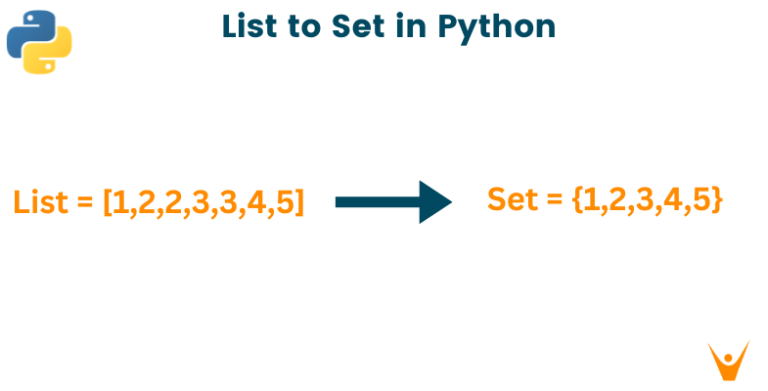Angular vs. AngularJS: Exploring the Key Differences – Update 2023
From the perspective of a non-technical individual or someone new to development, Angular and AngularJS may seem indistinguishable. After all, they are both open-source technologies created by Google. Additionally, they are commonly employed for front-end development, constructing dynamic web applications, and crafting single-page applications.
Nevertheless, despite their similarities, the two frameworks, Angular and AngularJS, possess significant differences. Apart from the obvious distinction that AngularJS includes the “JS” suffix, there are several other notable contrasts between Angular and AngularJS.
Fortunately, understanding these fundamental disparities does not necessitate extensive developer experience. The following section provides a comprehensive comparison of Angular and AngularJS, covering a broad range of criteria.
So, without any further delay, let us explore the dissimilarities between AngularJS and Angular.
1. Overview of Angular
1.1 What is Angular?

Angular is a popular open-source front-end web application framework developed and maintained by Google. It is a complete rewrite of its predecessor, AngularJS, and was first released in 2016. Angular is often referred to as “Angular 2+” or simply “Angular” to distinguish it from AngularJS.
Angular follows the component-based architecture, where the application is built using reusable components that encapsulate the HTML, CSS, and JavaScript logic required for that component. It utilizes TypeScript, a statically-typed superset of JavaScript, as its primary language for development. TypeScript brings additional features like static typing, object-oriented programming concepts, and enhanced tooling support to Angular.
Angular provides a comprehensive set of features and tools for building complex and scalable web applications. It includes features such as data binding, dependency injection, routing, forms handling, and reactive programming with RxJS. Angular also emphasizes the concept of “two-way data binding,” which means that changes in the application state automatically update the user interface, and user interactions update the underlying data.
With its robust ecosystem and extensive documentation, Angular has gained popularity among developers for its performance, scalability, and maintainability. It is widely used for developing large-scale enterprise applications, single-page applications, progressive web apps, and mobile applications using frameworks like Ionic.
1.2 Features of Angular

Angular offers a rich set of features that make it a powerful framework for developing web applications. Here are some key features of Angular:
1.2.1 Component-Based Architecture:
Angular follows a component-based architecture, where the application is built using reusable and modular components. Each component encapsulates its own HTML, CSS, and JavaScript logic, making it easier to develop, test, and maintain.
1.2.2 TypeScript:
Angular is built with TypeScript, a statically-typed superset of JavaScript. TypeScript brings benefits such as static typing, enhanced IDE support, better tooling, and improved code maintainability. It helps catch errors during development and provides a more structured approach to building applications.
1.2.3 Two-Way Data Binding:
Angular provides two-way data binding, which means that changes in the application state are automatically reflected in the user interface, and user interactions update the underlying data. This simplifies the synchronization between the data and the UI, reducing boilerplate code.
1.2.4 Directives:
Angular offers powerful directives that extend the functionality of HTML. Directives allow you to manipulate the DOM, add behavior to elements, and create reusable components.
1.2.5 Dependency Injection:
Angular has a built-in dependency injection system that helps manage the dependencies of components. It allows for the easy creation and testing of components by providing their required dependencies.
1.2.6 Routing:
Angular provides a robust routing mechanism that allows you to create navigation paths and handle routing within your application. It supports both basic and dynamic routing, enabling the creation of single-page applications with multiple views.
1.2.7 Forms Handling:
Angular offers comprehensive support for building forms and handling form validation. It provides features like form controls, form groups, and form validation mechanisms, making it easier to create and manage complex forms.
1.2.8 Reactive Programming with RxJS:
Angular integrates with RxJS, a reactive programming library, allowing you to build applications with reactive and asynchronous data streams. RxJS provides powerful operators for managing data streams, handling events, and managing asynchronous operations.
1.2.9 Testing:
Angular provides robust testing support out of the box. It includes tools and utilities for writing unit tests, integration tests, and end-to-end tests. Angular’s testability also makes it easier to write testable code and ensure the quality of your application.
1.2.10 Mobile Development:
Angular has features and tools for building mobile applications. It integrates well with frameworks like Ionic, which enables the development of cross-platform mobile apps using web technologies.
These features, along with Angular’s comprehensive documentation, active community, and continuous updates, make it a popular choice for building modern, scalable, and maintainable web applications.
1.3 Pros and Cons of Angular
Let’s examine the pros and cons of the Angular development framework.

1.3.1 Pros of Angular
- The latest version of the Angular framework utilizes TypeScript, enabling developers to benefit from enhanced code organization and optimization through the use of object-oriented programming principles.
- Angular includes a mobile support framework, allowing developers to build mobile applications using Angular.
- Angular provides support for modifying and improving the hierarchical dependencies system, offering better modularity and flexibility in application development.
- Developers can take advantage of various features in Angular, including syntax for type checking, support for the Dart language, lambda operators, Angular CLI (Command Line Interface), compatibility with ES5 and ES6, as well as iterators.
- Angular follows a semantic versioning approach, consisting of a major-minor-patch versioning scheme, ensuring compatibility and facilitating the migration process between different versions.
- One of the significant advantages of Angular is its streamlined routing mechanism, simplifying the implementation of navigation and routing events within the application.
1.3.2 Cons of Angular
- When it comes to the setup process, AngularJS is generally considered to be less complex compared to Angular 2+ versions.
- AngularJS may not be the most suitable choice for creating simple web applications, as it is designed to handle more complex and robust applications.
- In Angular, there can be challenges in ensuring compatibility across a wide range of browsers, as it may not include all the features and optimizations found in more modern versions of browsers.
2. Overview of AngularJS
2.1 What is AngularJS?

AngularJS is an open-source JavaScript framework developed by Google for building highly dynamic websites and web applications. It was released in 2010 with a focus on creating single-page applications and quickly gained popularity in front-end development.
One of the significant differences between AngularJS and Angular is the underlying language. AngularJS is based on JavaScript, whereas Angular is built using TypeScript, a statically-typed superset of JavaScript.
It’s worth noting that the term “Angular” can sometimes be used interchangeably with “AngularJS,” causing confusion. However, AngularJS specifically refers to the versions in the 1.xx series, with AngularJS 1.8.3 being the latest version released in April 2022. AngularJS 1 is sometimes referred to as Angular 1, while Angular versions 2 and beyond are simply known as Angular.
The distinction is necessary because Angular, starting from version 2, is a complete rewrite of AngularJS and introduces significant changes in terms of architecture, performance, and development practices.
2.2 Features of AngularJS

Before branching off into AngularJS and Angular, the initial version of Angular (Angular 1) gained significant popularity for developing high-performance web applications. Similar to Angular, AngularJS continues to evolve and stay up-to-date through regular updates, making it one of the sought-after skills for Angular developers. Here are some notable features of AngularJS:
- Plain JavaScript: AngularJS utilizes plain JavaScript, meaning that AngularJS components are essentially JavaScript components. This direct reliance on JavaScript makes AngularJS code easy to test and maintain.
- Directives and Controllers: In AngularJS, developers have control over the functionality and behavior of the application through directives and controllers. Directives are directly added to the HTML code, while controllers enable manipulation of the Document Object Model (DOM) elements. We will explore these concepts further in the subsequent sections of the AngularJS vs. Angular comparison.
- Component Reusability: AngularJS promotes component reusability, allowing developers to leverage the “build once, use multiple times” approach. This capability enables the reuse of components without the need to recreate them from scratch, enhancing development efficiency.
- Routing: AngularJS includes routing functionality, enabling seamless navigation between different views, pages, or sections of an application or website without requiring a page reload. This enhances user engagement and contributes to the addictive nature of certain websites or applications.
These features highlight the strengths of AngularJS and demonstrate its ability to create dynamic and maintainable web applications.
2.3 Pros and Cons of AngularJS

Below are a few pros and cons of the Angular JS development framework.
2.3.1 Pros of AngularJS
AngularJS, the initial version of the Angular framework, offers several advantages that have contributed to its popularity among developers. Here are some of the pros of AngularJS:
- AngularJS utilizes a powerful Model-View-Controller (MVC) data binding mechanism that enhances the performance of dynamic applications.
- It allows change detection and unit testing to be performed at any given moment.
- Developers can leverage declarative template language, employing HTML, to facilitate an intuitive workflow.
- This open-source framework streamlines front-end development by eliminating the requirement for additional platforms or plugins.
- AngularJS programmers can run their applications on a range of devices, including iOS and Android phones and tablets.
These advantages have made AngularJS a popular choice for building dynamic and scalable web applications, especially when working with complex data bindings and interactive user interfaces.
2.3.2 Cons of AngularJS
While AngularJS has several advantages, it also has some limitations and drawbacks that developers should be aware of. Here are some of the cons of AngularJS:
- AngularJS can be perceived as both extensive and intricate due to its numerous approaches to accomplishing the same task.
- One significant drawback of AngularJS is its somewhat challenging and inadequate scalability during implementation.
- When the JavaScript functionality of an AngularJS application is disabled, users are presented with a basic page.
- Moreover, the user interface may become compromised when handling a large volume of 250+ apps simultaneously in AngularJS.
It’s important to consider these limitations and evaluate whether AngularJS is the right choice for your specific project requirements and development context.
3. Different Types of Angular and AngularJS Versions
Primarily, Angular 1 corresponds to AngularJS, while Angular versions 2 and onwards are grouped under the name Angular. It is important to note that there are significant differences between AngularJS and the later versions of Angular.

Here’s a brief overview of each of them, along with their key highlights
-
Angular 1
AngularJS was initially released in 2010 and has evolved into its own segment. The development team released the latest version of AngularJS, which is 1.8.3, in 2022.
-
Angular 2
Angular 2 was the typeScript-based framework that was a complete rewrite of Angular 1. Released in 2016.
-
Angular 3
Angular 3 was being developed in a MonoRepo, but Google decided to skip the Angular 3 version due to the Angular router already being in version 3. Instead, they moved directly to Angular 4, which was released in 2017.
-
Angular 4
Angular 4 brought some changes to the core library while maintaining similar concepts to Angular 2.
-
Angular 5
Released in 2017, introduced features like build optimizer, Angular Universal State Transfer API, and DOM support for code and compiler improvements.
-
Angular 6
Released in 2018, focused on the toolchain and enabled the use of Angular components in different environments, such as Vue.js.
-
Angular 7
In the same year, Angular 7 was released, encompassing the entire platform, including Angular Material, CLI, and the core framework.
-
Angular 8
Released in 2019, introduced Ivy as the new rendering engine and Bazel as the build system.
-
Angular 9
Released in 2020, made a major impact by switching applications to the Ivy compiler and runtime by default.
-
Angular 10
A minor update, aimed to keep Angular in sync with the JavaScript ecosystem.
-
Angular 11
Also released in 2020, focused on triaging Angular issues based on community needs.
-
Angular 12
Appearing in May 2021, aligned with the Ivy Everywhere vision.
-
Angular 13
Released in November 2021, expanded on Ivy-based features and optimizations through community-led discourse.
-
Angular 14
The latest version, includes changes and enhancements determined by the Angular community through requests for comments (RFC).
This guide provides a reference for comparing different versions of Angular, from AngularJS to the latest iterations. Now, we can move on to the awaited topic: the differences between AngularJS and Angular.
4. Angular vs AngularJS: A Detailed Overview

4.1 Architecture:
- AngularJS follows the Model-View-Controller (MVC) architecture, with separate components for the model, view, and controller.
- Angular follows a component-based architecture, where components replace the view and directives, and serve as controllers.
4.2 Directives:
- AngularJS heavily relies on directives, which allow the addition of behavior to DOM components using the ng- prefix.
- Angular also uses directives, but they are classified into structural directives, attribute directives, and component directives.
4.3 Dependency Injection:
- AngularJS has a singular injector, while Angular has a hierarchical dependency injection system with declarations, providers, and constructor functions.
- In AngularJS, dependency injection tokens are in string format, whereas in Angular, they can be in the form of classes and strings.
4.4 Data Binding:
- AngularJS features two-way data binding, where changes in the view or data are reflected in real-time in both directions.
- Angular uses one-way data binding by default, reducing the number of DOM updates. Two-way data binding can still be achieved through ngModel.
4.5 Scope:
- AngularJS uses $scope to transmit data between the view and controller. It is accessible to all objects in the application.
- In Angular, data sharing is component-based, using local variables, input binding, viewChild, shared services, etc.
4.6 Command-Line Interface:
- Angular has a command-line interface (CLI) for development, testing, maintenance, deployment, and configuration. It simplifies the development process.
4.7 Routing:
- Angular has a built-in router that is managed by components, allowing for autonomous sub-routes.
- AngularJS has native routing determined from templates to URL routes using controllers.
4.8 Performance and Popularity:
- Angular’s one-way data binding system and server-side rendering contribute to its improved performance compared to AngularJS.
- Both AngularJS and Angular have a significant level of popularity and community support.
Overall, Angular offers a more advanced and modern approach to front-end development compared to AngularJS. The choice between the two depends on project requirements, developer preferences, and the need for specific features and optimizations.
5. What is the Major Difference Between AngularJS and Angular

The major difference between AngularJS and Angular lies in their architecture and underlying concepts. Here are the key distinctions:
5.1 Language:
AngularJS is based on JavaScript, while Angular is based on TypeScript, a statically typed superset of JavaScript. TypeScript introduces features such as static typing, classes, interfaces, and decorators, which enhance code maintainability and scalability.
5.2 Architecture:
The MVC (Model-View-Controller) architecture is followed by AngularJS, organizing the application logic into models, views, and controllers. On the other hand, Angular follows the component-based architecture, building the application using reusable and independent components.
5.3 Two-way Data Binding:
The powerful two-way data binding feature of AngularJS is known for automatically synchronizing data between the model and the view. Angular, however, favors one-way data binding by default, promoting a unidirectional flow of data to improve performance and predictability.
5.4 Performance and Optimization:
Angular introduces various performance optimizations, such as the change detection mechanism with zone.js and the new Ivy rendering engine, which improves bundle size, runtime performance, and tree shaking capabilities. These optimizations make Angular generally faster and more efficient than AngularJS.
5.5 Size and Modularity:
AngularJS is a relatively larger framework, whereas Angular is designed to be more modular. Angular allows developers to selectively import only the required features, reducing the application bundle size and enhancing performance.
5.6 Mobile Support:
AngularJS lacks built-in mobile support, requiring additional frameworks like Cordova or Ionic to build mobile applications. Angular, on the other hand, provides native mobile development capabilities through frameworks like Ionic, allowing developers to create cross-platform mobile apps more seamlessly.
5.7 Community and Ecosystem:
Angular has a more active and larger community compared to AngularJS. It offers extensive documentation, regular updates, and a wide range of third-party libraries and tools, making it easier to find resources and get community support.
Considering these differences, Angular is often seen as a more modern and advanced framework compared to AngularJS. However, the choice between AngularJS and Angular depends on factors such as project requirements, existing codebase, team expertise, and long-term goals.
6. Concluding Thoughts
While both AngularJS and Angular are powerful front-end development frameworks, there are significant differences between them. In summary, Angular can be considered as the newer version of AngularJS, utilizing components and directives.
Angular offers numerous advantages with its impressive features and performance. It is constantly updated to meet modern application requirements. On the other hand, AngularJS, while still receiving regular updates, is a product of its time and may not fully meet the needs of modern applications.
Both AngularJS and Angular have their merits and can be valuable tools in the hands of skilled developers. If you’re looking to Hire AngularJS developers, feel free to reach out to us, and we’ll be happy to assist you!




